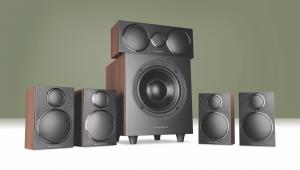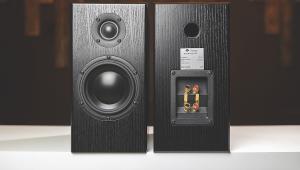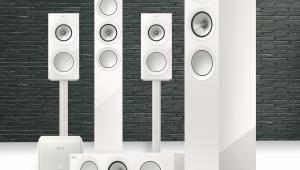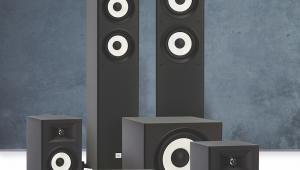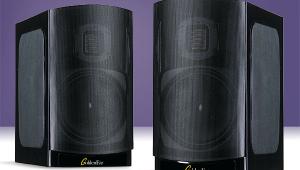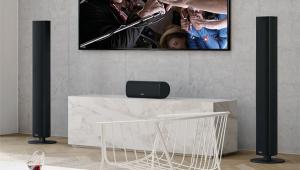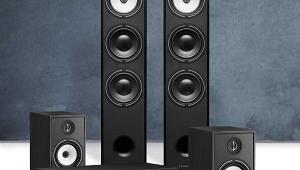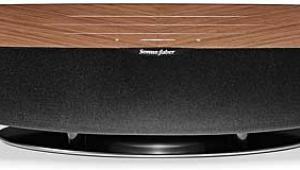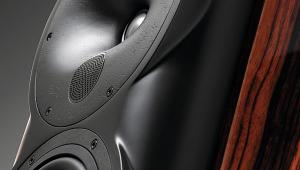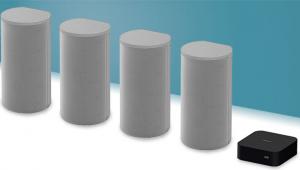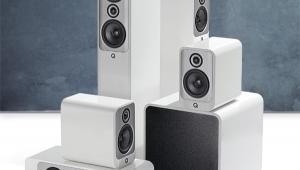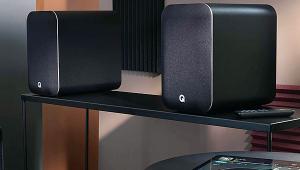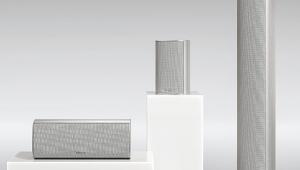KEF Q Series 5.1.2 review
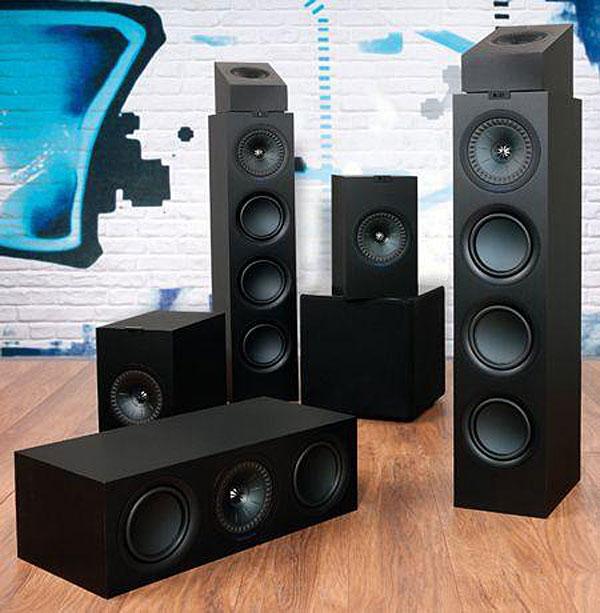
 The Q Series remains KEF's entry point for tower speakers, below the R Series and Reference lines, and the super-stylish and super-expensive Blade and Muon models. If you're looking for the KEF sound writ large, this is where you'll probably start.
The Q Series remains KEF's entry point for tower speakers, below the R Series and Reference lines, and the super-stylish and super-expensive Blade and Muon models. If you're looking for the KEF sound writ large, this is where you'll probably start.
The Qs are now into an eighth iteration, having originally launched back in 1991. Much has changed over the years (including the provision of Dolby Atmos support, more on that later), but one thing has remained constant – the use of a Uni-Q driver.
KEF watchers will be familiar with the Uni-Q, but here's a quick recap. By mounting a tweeter unit at the acoustic centre of a midbass driver, the brand claims it gets 'closer than ever' to the holy grail of a single point source, bringing with it benefits in sound dispersion and sonic clarity. A Uni-Q driver, in one form or another, is used in every speaker in this package, bar the subwoofer. They are visibly similar to ones we’ve looked at in the past, featuring as they do items like the tangerine waveguide (which as well as improving dispersion gives a cool jet-engine vibe to the drivers). Behind the scenes, however, the Q Series drivers feature a new tweeter loading tube, intended to beef up lower treble performance and ensure a better crossover between the high and midbass units.
The package in question is a 5.1.2 system, with a retail price of a fraction under £3,300. On front left and right duty are KEF's Q750s (£1,150-per-pair); for the surround channels we have the £530-per-pair Q350 standmounts. These are joined by the Q650C centre channel speaker (£550), the only such model in the Q range. As the latter uses 6.5in drivers, those who want the same units across their LCR stage will have to go with this overall system. There are smaller floorstander (Q550) and standmount (Q150) models available, but these feature 5.25in Uni-Q drivers. There's also a flagship Q950 floorstander, where the Uni-Qs expand to 8in.
Unusually, there are two different methods of bass management in use across the Q range. The Q350s have a rear-mounted bass port, employing 'Computational Flow Dynamics' to ensure the greatest efficiency combined with the lowest noise. The Q750 floorstanders, on the other hand, are sealed cabinet designs.
While there appear to be four drivers in this towering cabinet, only two of them are conventionally wired to the crossover. The other two are auxiliary bass radiators, which help control low-frequency energy in the cabinets – a practice more commonly seen in subwoofers. This is also the system used in the Q650C.
As if KEF was wanting to go all in on cabinet options, the Q50a is a traditional sealed box. And the Q50a, perhaps, is what elevates this package beyond its myriad mid-range competitors...
All aboard the Atmos expressWhen Dolby Atmos was announced, audio brands were given an opportunity but one that came with caveats. Sure, it was a chance to sell more speakers, but it had to be balanced against consumer desires to keep things neat and tidy. Over the years, people have shown resistance to having more than five channels of speakers in their room – particularly if a physical, paint-work-ruining installation was also required.
KEF was early out of the blocks with a response. Its R Series speakers were joined by the R50, an upward-firing Dolby-certified speaker for placing on top of an existing stereo pair (either at the front or back of an array). This was potentially not as elegant as building the angled driver into the same cabinet, but with a strong pedigree in stereo (and an ongoing desire to keep it), KEF probably felt this was the better solution. Now the Q Series has been updated and the same principle applied.
While this is good news for Atmos fans, it’s also good news for less committed multichannel users. The Q50a (£450 per pair) is designed to work equally happily mounted on a wall as a surround speaker (two internal brackets are fitted), with its 5.25in Uni-Q driver angled downwards towards the listener from a suggested elevation of 2ft above ear-height.
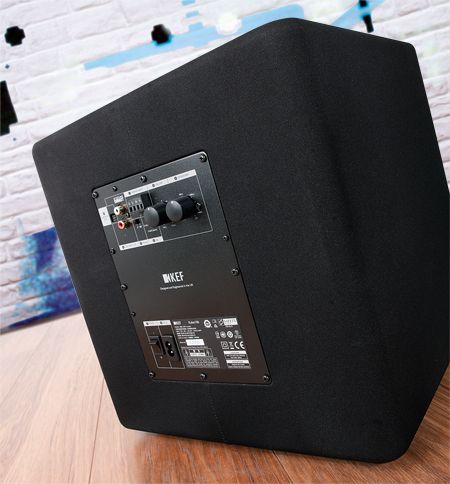
There is no dedicated Q Series subwoofer. Therefore, taking on LFE in our package is KEF's brand-new Kube10b, a relatively compact and affordable model (£600) featuring a 10in custom driver in a sealed cabinet. A 300W Class D amp provides the power, in collaboration with KEF's bespoke iBX (Intelligent Bass Extension) DSP engine, resulting in a lower claimed extension (24Hz rather than 35Hz) over the previous 10in Kube2. 8in and 12in Kube models are now also available.
Aesthetically, there are some pluses and minuses to what KEF has done with this latest version of the Q Series. Compared to the previous generation, which had a fair few visual adornments, the new models seem almost minimalist, with only the tweeter being finished in a colour other than that which you ordered the speaker in. The finish options at the time of writing were white and the black you see here. This lack of additional detailing does mean that the black KEFs really are very black indeed. This is brilliant for anyone looking for something for a projector-based setup, but at times I felt like I was hosting a convention of monoliths from 2001: A Space Odyssey...
These are also fairly large speakers. The Q750 isn’t that tall but it is pretty deep, and it uses a set of outriggers (not photographed) which considerably increases the footprint. The Q650C is also a bit of a whopper. It mirrors the driver complement of the Q750, less a single ABR, but at 63cm wide, you are going to need a fair amount of space for it. The news isn’t all bad, though. The Q Series are beautifully made and KEF’s use of ABRs has ensured that the front speakers are easy to place and also impressively sensitive.
Effortless Uni-QConnected to a Yamaha AVR and Emotiva A700 power amp (the latter handling the main five speakers), the KEFs proved easy enough to get in and running once I elbowed some equipment out of the way of the Q650C. And once you settle down and start listening, KEF trademarks are present from the very beginning. After multiple generations and two decades of fettling, the Uni-Q driver really is able to do things that are unusual at the price. There is a depth and effortless three-dimensionality to the way that they render a soundstage that is addictive.
This means that when you give the KEFs something sizable to get their teeth into, the result is extremely convincing. Immortan Joe’s speech to the massed crowd at the foot of the citadel in Mad Max: Fury Road (Dolby Atmos, Blu-ray) is conveyed with a real sense of his distance to the crowd and the vastness of the surrounding wasteland. Within this space, the crucial effects are placed with pinpoint accuracy – buzzing flies, clanking empty pots and crowd chatter pepper the soundscape. As you might hope with an identical Uni-Q in each main cabinet, the blend between speakers is exceptionally good, and across the front three in particular the effect is absolutely uniform.
This is down in no small part to the Q650C. It might be a big lad but this lends it the ability to generate a sense of monstrous scale in keeping with the Q750 floorstanders. It also does a fine turn with voices. Later in Mad Max: Fury Road, in the middle of the sandstorm, Nux’s deranged intonation is replicated perfectly amongst the soundmix's medley of other noises. What I found most rewarding about this is that while the KEFs can unpick the most congested material, they don’t do it in a manner so analytical that you lose the fundamental joyous insanity of the film.
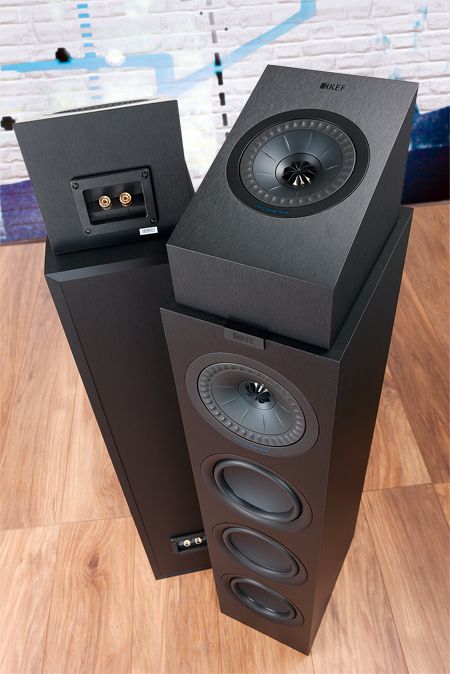
The Q50a Atmos module does a cracking job too. I was actually given four to play with, and my listening flitted between 5.1.2 and 5.1.4, placing them atop the respective main speakers. Their output melds smoothly with the larger enclosures, and the extra sense of scale and immersion they add to the sandstorm sequence is beautifully judged. Something that helps the Q50a deliver the goods is that it has meaningful range of its own. KEF quotes a figure of 95Hz for the lower roll off, but in-room and placed on the substantial cabinet of another Q Series speaker, it feels like there is more than that available. Grippy rubber feet are fitted to help keep the unit in place; this also ensures there is no sign of cabinet resonance or any other unwanted noise.
The real star turn for the KEFs is with that rarest of things, subtle use of Atmos. As you might imagine, they handle the immediate aftermath of the water landing in Sully: Miracle on the Hudson (Blu-ray, Dolby Atmos) exceptionally well, but I was equally impressed with how they conveyed the enveloping ambience of the airport terminal. The scale they impart is beautiful but nuanced – the sort of thing that you don’t notice until you unplug them. This isn’t the time to talk about the ‘correct’ use of height effects but this has to be one of the more worthwhile examples for me.
Against this largely positive assessment, there isn’t much to be negative about the system as a whole. The Q350 standmount is a fine performer, but an issue that I found when I reviewed them in a two-channel configuration – of slightly overcooked bass when positioned too close to a wall, something that is more likely to happen when used as a surround speaker – surfaced again. This can be countered by repositioning, breaking out the foam bungs for their rear ports, or experimenting with crossover settings.
For a slightly more affordable package you might consider using the Q50a model for surround channels, as it has the performance power and, if you wall mount it, you get some floor space back, too.
The performance of the Kube10b is also on the money. Its bass tones mesh well with the other speakers, and it has rather more low-end shove than might be expected for a sub of this size. There's also agility in evidence; it starts and stop at the right moments, making for a tight, well-defined low-frequency layer that increases the cinematic appeal of the whole array. In truth, if you must have the sort of bass that you perceive as a slightly urgent feeling in your lower intestine, then this may fall short, but given how easy it is to place and live with – helped by a clever switch that alters the frequency response for wall, corner or free-space positioning that really does work – I can see many people being perfectly happy with it.
New contenderIn fact, I can see plenty of people being perfectly happy with this KEF collection full stop. I’m not going to pretend to being the biggest fan of its industrial design, but looks are subjective (I know HCC's editor is a fan) and this is a set of speakers that's so continuously sonically convincing it really doesn’t matter. Presentation is spacious, lifelike and balanced between the channels, while the cabinets are easy to drive. Throw in their excellent Atmos integration and you have a brilliant new contender at the price point.
Specification
Q750
Drive units: 1 x 6.5in aluminium Uni-Q midbass driver with 1 x 1in aluminium tweeter; 1 x 6.5in aluminium bass driver; 2 x 6.5in auxiliary bass radiators
Enclosure: Sealed
Frequency response (claimed): 48Hz-28kHz
Sensitivity (claimed): 88dB
Power handling (claimed): 150W
Dimensions: 323(w) x 977(h) x 310(d)mm (with plinth)
Weight: 16.5kg
Q650C
Drive units: 1 x 6.5in aluminium Uni-Q midbass driver with 1 x 1in aluminium tweeter; 1 x 6.5in aluminium bass driver; 1 x 6.5in auxiliary bass radiator
Enclosure: Sealed
Frequency response (claimed): 64Hz-28kHz
Sensitivity (claimed): 88dB
Power handling (claimed): 150W
Dimensions: 629(w) x 214(h) x 304(d)mm
Weight: 13.6kg
Q350
Drive units: 1 x 6.5in aluminium Uni-Q midbass driver with 1 x 1in aluminium tweeter
Enclosure: Ported
Frequency response (claimed): 63Hz-28kHz
Sensitivity (claimed): 87dB
Power handling (claimed): 120W
Dimensions: 210(w) x 362(h) x 306(d)mm (with rubber feet)
Weight: 7.6kg
Q50a
Drive units: 1 x 5.25in aluminium Uni-Q midbass driver with 1 x 1in aluminium tweeter
Enclosure: Sealed
Frequency response (claimed): 96Hz-19.5kHz
Sensitivity (claimed): 86dB
Power handling (claimed): 100W
Dimensions: 180(w) x 174(h) x 259(d)mm
Weight: 4.25kg
Kube10b (subwoofer)
Drive units: 1 x 10in woofer
Enclosure: Sealed
Frequency response (claimed): 24Hz-140Hz (+/-3dB)
On board power (claimed): 300W
Remote control: No
Dimensions: 370(w) x 353(h) x 370(d)mm
Weight: 17.4kg
Connections: Stereo phono input/LFE input; speaker-level input
 |
Home Cinema Choice #351 is on sale now, featuring: Samsung S95D flagship OLED TV; Ascendo loudspeakers; Pioneer VSA-LX805 AV receiver; UST projector roundup; 2024’s summer movies; Conan 4K; and more
|




